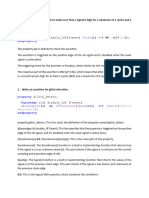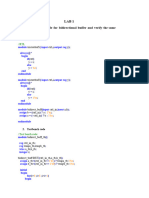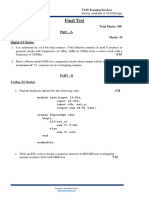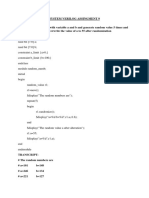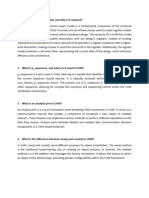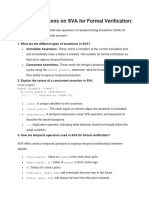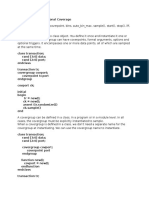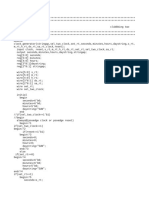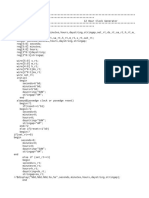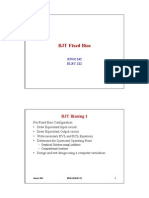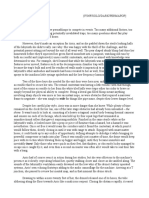0% found this document useful (0 votes)
1K views4 pagesSystemVerilog Assertion Practice Questions and Answers
The document contains a series of SystemVerilog assertions designed to verify various signal behaviors in digital circuits. Each assertion is defined with a specific property and includes checks for timing relationships, signal states, and conditions under which certain signals should or should not occur. The assertions cover a range of scenarios including signal transitions, stability, and interactions between multiple signals.
Uploaded by
sureshCopyright
© © All Rights Reserved
We take content rights seriously. If you suspect this is your content, claim it here.
Available Formats
Download as DOCX, PDF, TXT or read online on Scribd
0% found this document useful (0 votes)
1K views4 pagesSystemVerilog Assertion Practice Questions and Answers
The document contains a series of SystemVerilog assertions designed to verify various signal behaviors in digital circuits. Each assertion is defined with a specific property and includes checks for timing relationships, signal states, and conditions under which certain signals should or should not occur. The assertions cover a range of scenarios including signal transitions, stability, and interactions between multiple signals.
Uploaded by
sureshCopyright
© © All Rights Reserved
We take content rights seriously. If you suspect this is your content, claim it here.
Available Formats
Download as DOCX, PDF, TXT or read online on Scribd
/ 4



